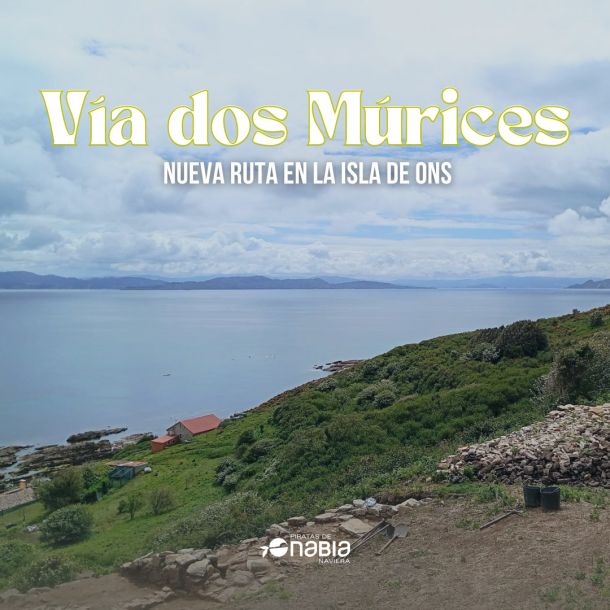Discovering the starry sky from the Cíes islands
 The night of August 3 and 24 we will approach by boat to the Cíes Islands to enjoy a new starlight route. Ricardo Lago, official Starlight guide of the Parque Nacional das Illas Atlánticas de Galicia, tells us more about this paradise for astronomy lovers.
The night of August 3 and 24 we will approach by boat to the Cíes Islands to enjoy a new starlight route. Ricardo Lago, official Starlight guide of the Parque Nacional das Illas Atlánticas de Galicia, tells us more about this paradise for astronomy lovers.
What do we talk about when we talk about a “starlight place”?
The National Maritime-Terrestrial Park of the Atlantic Islands of Galicia is a starlight site, a privileged place for the observation of the night sky due to its characteristics. It has been certified by the Starlight Foundation (created by the Astrophysical Institute of the Canary Islands), dedicated to the protection of the starry sky, the dissemination of astronomy and the promotion, coordination and management of the Starlight movement.
The absence of light pollution in the Atlantic islands makes extraordinary astronomical observation possible. In this sense, there is a growing commitment on the part of the public administrations in the Park’s area of influence to its conservation and to raising public awareness that light pollution, an evil of our times, is a reality against which action must also be taken.
What is the trick to watching a perfect sunset?
With a pleasant climate and the surroundings of the P.N.M.T. of the Atlantic Islands it is very easy to enjoy spectacular sunsets with sunsets over the Atlantic Ocean. The main trick is to enjoy the moment, while complying with minimum observational safety requirements. Never look directly at the sun without glasses of proven quality; and if you have them, look for short periods of time at the moment of contact with the horizon line, to avoid possible irreparable damage to the eyes.
For those who don’t know what green lightning is…
It is an optical phenomenon, visible, due to the stratification of the layers of the atmosphere that occurs just at the moment of sunset and in which we can observe, with some expertise, and a bit of chance, a flash of green color. For this, the horizon must be free of clouds and, of course, we must have chance on our side since it is possible to miss it by a simple blink of an eye, since the green ray lasts for a hundredth of a second.
From any point in the National Park, what tips should we follow for stargazing? And to guide us?
For astronomical observation in general we have to take into account several points, but a fundamental one is to move as far away as possible from light sources and wait for our pupil to adapt to the absence of light, even avoiding turning on flashlights.
For orientation the important thing is to know where the cardinal points are and with the starry sky we can get it thanks to the North Star of Ursa Minor, which is vertically above the geographic north. The Big Dipper is a great help to locate the Polar with a simple trick that we will explain in the observation of the next route.
And what else will we learn on our starlight journey on July 24?
On the trip of the 24th we will depart from Vigo (22:30) after sunset (which will take place at 22:05h.), and we will arrive at the waters of the park with a darkened sky that will allow us to observe with the naked eye the first visible stars and some planets. We will be able to see the Milky Way over our heads and at the same time learn to orient ourselves and recognize some of the main constellations in the summer sky. Along with all this we will learn some tricks to observe next August the “Tears of St. Lawrence” star shower.


